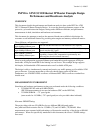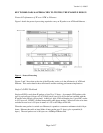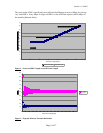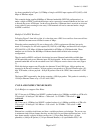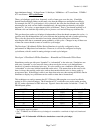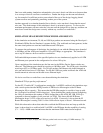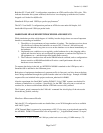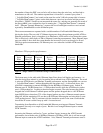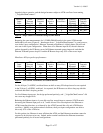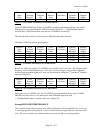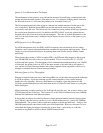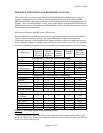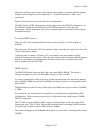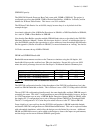
Version 1.0, 4/10/02
Page 12 of 17
Ethernet
Input
Ports
ATM
Transmit
Rate [%]
IXF6012
Transmit
Idle
ATM
Receive
Ports
IXF6012
Overflows
Ethernet
Transmit
KFrame/s
Ethernet
Transmit
[MB/s]
8 100 0 1 0 88,300 5.6
Figure 8 – Two-cell/PDU Performance on 143MHZ DRAM
Using 143 MHz DRAM, the 40-byte (2-cell/PDU) workload performed perfectly, even with 8
Ethernet ports over-subscribing the ATM Transmitter (Figure 8). “_VolgaGetChanCounters”
recorded zero ATM Transmit Idle cells and zero ATM Receive overflows.
This illustrates the sensitivity of the design to DRAM speed grade selection.
Hardware 1500-byte packet performance
Ethernet
Input
Ports
ATM
Transmit
Rate [%]
IXF6012
Transmit
Idle
ATM
Receive
Ports
IXF6012
Overflows
Ethernet
Transmit
KFrame/s
Ethernet
Transmit
[MB/s]
8 100
2
1
500
5,450 8.33
7 100
0
1
200
5,518 8.37
6 100 0 1 0 5,518 8.37
5 92 N/A 1 0 5,518 8.37
Figure 9 – 32-cell/PDU Performance on 133MHz DRAM
Results for 1500-byte packets (32-cells/PDU) were similar to the 2-cell case. The design worked
flawlessly with six input Ethernet ports. Five ports was not enough to drive ATM to saturation,
and the design degraded slightly as it was over-subscribed by adding the 7
th
and then 8
th
Ethernet
input port (Figure 9).
Ethernet
Input
Ports
ATM
Transmit
Rate [%]
IXF6012
Transmit
Idle
ATM
Receive
Ports
IXF6012
Overflows
Ethernet
Transmit
KFrame/s
Ethernet
Transmit
[MB/s]
8 100 0 1 0 5,517 8.37
Figure 10 – 32-cell/PDU Performance on 143 MHz DRAM
Analogous to the 2-cell/PDU case, the 32-cell/PDU case performed perfectly using 143 MHz
DRAM, even in the face of over-subscription with 8 Ethernet input ports and
“_VolgaGetChanCounters” running on the core (Figure 10).
StrongARM CORE PERFORMANCE
This example design sends exception cells, PDUs and frames to the StrongARM core. It uses up
to 4 message queues for this purpose – one for each of the microengines that can send data to the
core. The core is alerted by an interrupt when data is put into the core message queues.




